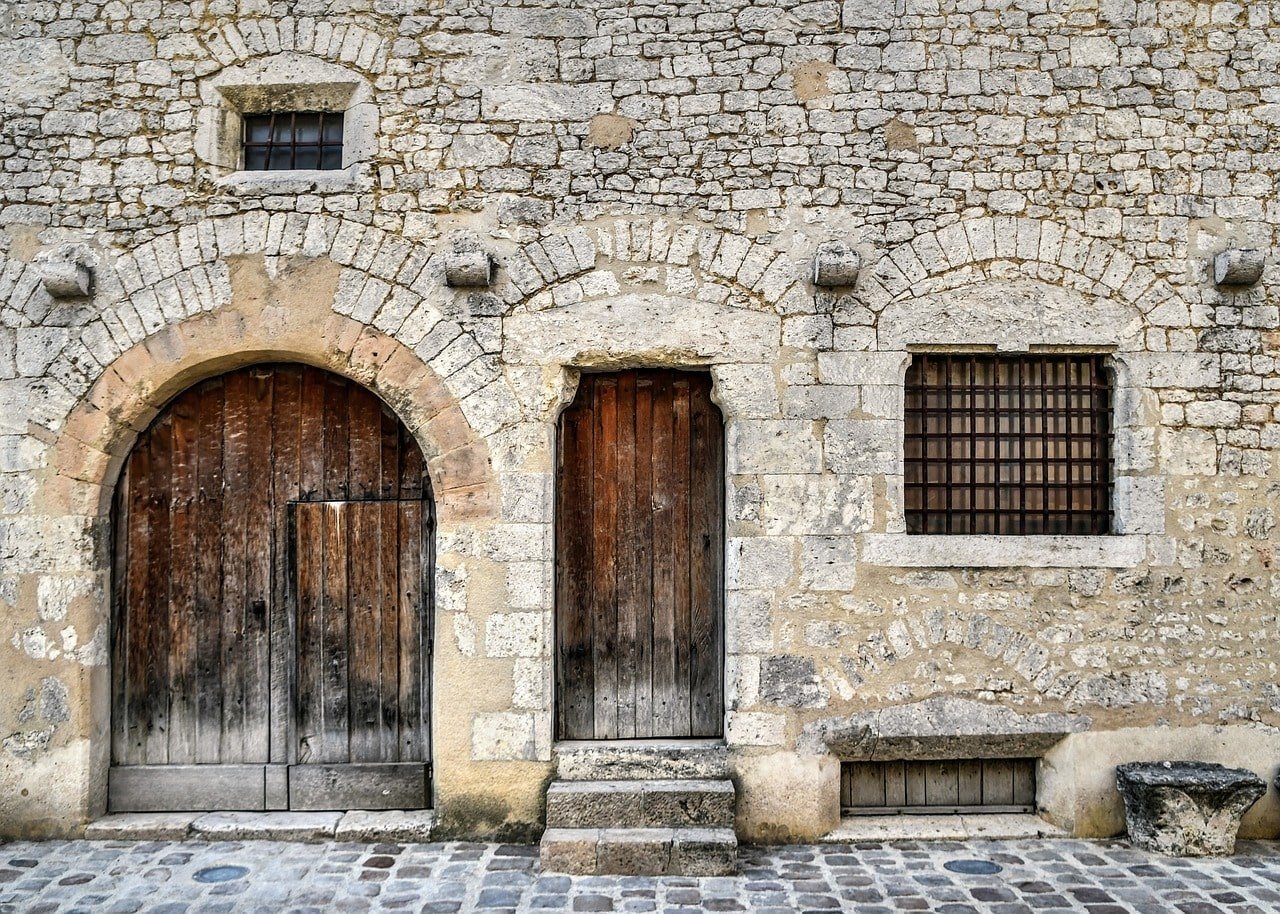The Evolution of Door Design: From Classic to Contemporary
The humble door has long been more than just a functional element of our homes and buildings. It serves as a portal, a boundary, and a statement of style. Over the centuries, door design has evolved from simple wooden panels to intricate metal and glass constructions, reflecting changes in architecture, technology, and aesthetics. In this comprehensive exploration, we'll trace the evolution of door design from classic traditions to contemporary innovations, highlighting how this essential element has adapted to meet the demands of modern living.
The Historical Significance of Doors
To understand the evolution of door design, it's important to appreciate their historical significance. Doors have been a fundamental part of human architecture since ancient times. In ancient Egypt, doors were often made from large stone slabs or wooden panels, intricately carved with symbols and deities. They were not merely functional; they were imbued with spiritual and symbolic meanings, marking the transition between sacred and profane spaces.
In classical architecture, particularly during the Roman and Greek eras, doors became more sophisticated. Greek doors often featured elaborate carvings and were constructed with high-quality wood, while Roman doors were known for their grandeur and use of bronze and iron fittings. These doors were not just functional barriers but also represented the wealth and status of their owners.
Medieval to Renaissance: Craftsmanship and Ornamentation
The medieval period saw a continuation of elaborate craftsmanship in door design. During this time, doors were typically heavy, solid wooden structures with ornate ironwork. The use of detailed carvings and metal studs reflected the architectural styles of castles and churches, where doors served as both defensive barriers and artistic expressions.
The Renaissance brought a shift towards symmetry and proportion, influencing door design to embrace classical elements such as columns, pilasters, and pediments. Doors became more refined, with increased attention to the details of the frames and panels. This period also saw the introduction of more decorative elements, such as intricate mouldings and carvings, which highlighted the elegance and grandeur of the architecture.
The Industrial Revolution: Mechanisation and Innovation
The Industrial Revolution marked a significant turning point in door design. The advent of mechanisation allowed for mass production, making doors more accessible and affordable to a broader audience. This period saw the introduction of new materials and manufacturing techniques, including the use of cast iron and steel, which brought about functional and aesthetic advancements.
One notable innovation was the development of the “Hollow Core” door, which used a lightweight honeycomb structure sandwiched between two thin veneer layers. This design provided improved insulation and reduced the weight of the door, making it more practical for various applications. The Industrial Revolution also saw the rise of glass doors, with early versions featuring simple glass panels set into wooden or metal frames. These doors allowed natural light to penetrate interiors, reflecting the growing emphasis on brightness and openness in architectural design.
The 20th Century: Modernism and Minimalism
The 20th century brought about radical changes in door design, driven by the modernist movement and the quest for simplicity and functionality. Modernist architects, such as Le Corbusier and Ludwig Mies van der Rohe, championed the use of new materials and techniques, resulting in sleek, minimalist door designs that emphasised clean lines and geometric forms.
During this period, doors began to feature large expanses of glass, with frames often made from aluminium or steel. This approach aligned with the modernist principle of “form follows function,” prioritising functionality and minimalism over decorative elements. The focus was on creating doors that seamlessly integrated with the surrounding architecture, enhancing the sense of openness and connection between indoor and outdoor spaces.
The mid-century modern era introduced additional innovations, such as the use of sliding doors and bi-fold doors, which allowed for flexible space management and improved accessibility. These designs reflected the growing interest in open-plan living and the desire for adaptable, multifunctional spaces.
The Timeless Appeal of Black Steel Doors
Among the various trends and innovations in door design, black steel doors stand out for their timeless appeal. These doors, characterised by their slender black frames and large glass panels, have been a staple of interior design for decades. Their popularity can be attributed to their blend of classic elegance and contemporary style, making them a versatile choice for a range of architectural settings.
The timelessness of black steel doors lies in their ability to adapt to various design aesthetics while maintaining a distinct and sophisticated look. Historically, steel doors were used in industrial and commercial settings, valued for their durability and security. Over time, their sleek, minimalist design began to find its way into residential interiors, where they became celebrated for their modern appeal and functional benefits.
Black steel doors continue to be a popular choice in contemporary design due to their ability to complement a wide array of interior styles. Whether used in minimalist modern homes or more traditional settings, these doors offer a touch of sophistication that remains relevant and stylish. Their clean lines and understated elegance make them a perfect fit for spaces that aim to balance modern functionality with classic charm.
Contemporary Trends: Sustainable and Smart Design
In recent decades, door design has continued to evolve, reflecting contemporary trends and technological advancements. One major trend is the focus on sustainability. As environmental awareness has grown, there has been an increased emphasis on using eco-friendly materials and manufacturing processes. Modern doors are now often constructed from recycled materials or sustainably sourced wood, and many feature energy-efficient glazing that helps to improve insulation and reduce heating and cooling costs.
Another significant development is the integration of smart technology. Contemporary doors often incorporate features such as electronic locks, biometric access controls, and integrated security systems. These innovations enhance convenience and safety, allowing homeowners to manage access to their properties remotely and with greater precision.
The rise of customisation has also influenced contemporary door design. Homeowners and architects now have access to a wide range of materials, finishes, and configurations, allowing for highly personalised and unique door solutions. From bespoke metalwork to custom glass patterns, modern doors can be tailored to suit a variety of aesthetic preferences and functional requirements.
Design Considerations for Modern Spaces
As door design continues to evolve, several key considerations are shaping modern choices. Understanding these factors can help in selecting the right door for any project.
1. Material Choice: The choice of material affects both the aesthetics and performance of a door. Wood remains a popular choice for its warmth and traditional appeal, while metal and glass offer a more contemporary look. Composite materials, which combine the benefits of different substances, are also gaining popularity for their durability and low maintenance requirements.
2. Functionality: Consider how the door will be used and the space it will occupy. Sliding doors are ideal for tight spaces where traditional swinging doors may be impractical, while bi-fold doors offer flexibility in managing larger openings. For areas requiring high security, reinforced doors with advanced locking mechanisms may be necessary.
3. Design Integration: The door should complement the overall design of the space. This includes coordinating with architectural features, furnishings, and finishes. Minimalist designs work well in modern interiors, while more ornate styles may suit traditional or eclectic spaces.
4. Energy Efficiency: As energy concerns become more prevalent, choosing doors with good insulation properties is important. Look for doors with energy-efficient glazing and well-sealed frames to help maintain comfortable indoor temperatures and reduce energy costs.
5. Maintenance and Durability: Different materials require varying levels of maintenance. Wooden doors may need periodic refinishing, while metal and glass doors generally require less upkeep. Consider the long-term care needs of the door and select materials that align with your maintenance preferences.
Future Directions in Door Design
Looking ahead, door design is likely to continue evolving in response to changing technological, environmental, and aesthetic trends. Emerging technologies such as smart home integration and advanced materials will likely play a significant role in shaping the future of door design.
Sustainability will remain a key focus, with ongoing innovations in eco-friendly materials and manufacturing processes. As architects and designers increasingly prioritise green building practices, doors will continue to evolve to meet these demands while maintaining their functional and aesthetic appeal.
In addition, the continued exploration of design possibilities will likely lead to even more innovative and customised solutions. From interactive and dynamic door systems to advanced materials that enhance performance and aesthetics, the future of door design promises to be both exciting and transformative.
Summary
The evolution of door design reflects broader changes in architecture, technology, and style. From the ornate wooden doors of ancient times to the sleek, glass-fronted designs of today, doors have continuously adapted to meet the needs and preferences of their users. As we look to the future, the continued innovation in materials, technology, and sustainability will shape the next chapter in the story of door design.
Whether you're renovating a historic home, designing a modern office, or planning a new build, understanding the evolution and current trends in door design can help you make informed choices that enhance both the functionality and aesthetics of your space. Embrace the rich history and exciting future of door design, and discover how this essential element can transform your environment.



